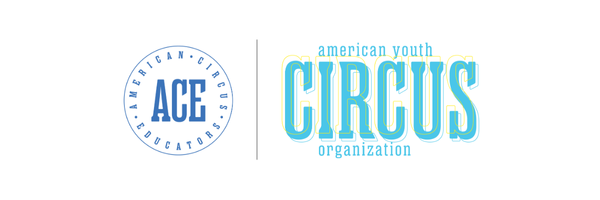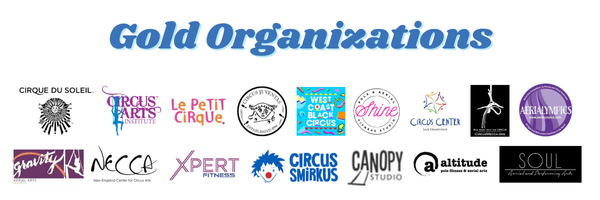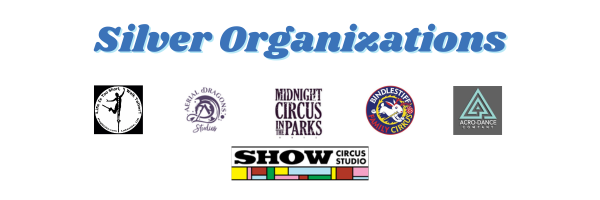Trust Me, I’m a Teacher: Identifying Authoritative Teaching and Content in the Age of Eeeeeeverybody’s an Expert
I am awash in experts. My doctor is – I hope – an expert at figuring out whether some NSAIDS will cure what ails me, or if my arm is actually going to fall off. My plumber is an expert at fishing Legos out of our toilet. My son will tell you he’s an expert at Star Wars and wearing his underwear on his head (he’s doing it RIGHT NOW), and lots and LOTS of folks are hanging out their shingles as EXPERT in the circus community. What does that mean anymore, to be an “expert” in the circus community? When anyone giving advice on the internet can claim the title, and the most basic scientific facts are being contested (flat earthers, I’m looking at you!), how does the layman sift through it all? How do you identify authoritative content?
Why Do We Care?
We care because truth matters. Expertise matters. Not getting your body broken while pursuing circus matters. It really does.
Training circus comes with a number of inherent risks. The first is, of course—The Biggie—catastrophic injury: falls, breaks, sprains, dislocations, and worse. More commonly, though, it’s the smaller injuries often caused by poor technique or risky behavior that keep students out of the air. Add to that the crushing difficulty of changing bad habits—circus and otherwise—once they’ve taken hold, and it’s not hard to see why having the guidance of a qualified circus coach is essential.
This week I was naughty. I eavesdropped on an amateur teaching session (a.k.a. the blind leading the blind). For the past few months, I’ve been paying copious amounts of money for experts to teach me the correct way to heave myself into a proper handstand, so my ears always perk up when I hear advice being tossed around. I heard such gems as, “sink more into your shoulders so it will be easier to balance” and “arch your back a little or bend your arms to correct your balance.” To top it all off, this was all being done on squishy mats. Now, none of this is likely to result in a catastrophic accident, but what is likely is a hand injury, shoulder issues, and increased time spent learning the skill because this advice contradicts current best practices for learning handstands. A qualified coach would have taught on a firm floor and cued to push the floor away (shoulders to the ears) and close the ribs as opposed to arching the back. That’s a big difference, friends! That difference is expertise.
Differing Levels of Awesome
Teachers across all disciplines tend to come in different flavors:
- Master Teacher: This is the coach in any field people save their money to fly to see: The Handstand Whisperer, The Trapeze Guru, The Juggling Sage. They are innovators in their field, and are widely considered the pinnacle of expertise.
- Expert in their Field: This professional is at the top of the class. They know their stuff but are also constantly working to up their game with new skills, techniques, and best practices in their chosen field. Teaching is a passion, not a side job.
- Good Instructor: This coach is fine. They offer solid instruction, appropriate safety parameters, and good movement vocabulary. They’re not going to kill you, but they’re probably also not getting you to the Olympics.
- Newbie: This is the brand new teacher. They may have completed a teacher training, or they may just be jumping into the fray. They have not had much hands-on time with students.
- Amateur/Hobbyist Teacher: There is a certain amount of professional training and experience required to legitimately put out your shingle as a teacher in any field; circus is no exception. The amateur or hobbyist is exactly that. They may be largely self-taught, not actively seeking to improve their skills, and/or just be looking to occasionally supplement their income. “Casual” best sums up their approach to teaching.
- Going to Kill You: This coach falls short of any and all meaningful standards of good teaching. They ignore best practices in safety, technique, and communication. They often see themselves as rogue, renegade gurus who are “bucking the system.” They don’t know (and don’t care) what they don’t know, and are actively resistant to new information.
Teacher Trainings
Most education industries have meaningful standards of training and qualification, why shouldn’t we? Back in Ye Days of Olde when I began teaching (18 years ago!), there was no such thing as a teacher training; heck, if you wanted to learn circus, you had to pack up and move unless you lived in Montreal, San Francisco, etc. Teaching circus was like the Wild West—we figured things out on the fly, cobbled together bits and pieces from all over, and employed way more trial and error than would-be teachers need to today. In fact, there’s never been a better time to be learning! We are literally awash in aerial teacher trainings, online tutorials, exercise science, business resources, and pretty much all the info we could ever want to get our grubby little hands on. Which brings us to the real question…
How the Heck do We Identify Authoritative Content?
With “fake news” making the rounds daily, twitter bots twittering, and eeeeeeeeeverybody being an expert on everything, how on earth are we supposed to sift through it all? The same way we always (should) have: by using our noggins.
- Ask for facts and evidence. Do your homework and consult The Google. Beware of bias! If there are conflicting views, make sure to diversify your research and consider other angles. Science is real. Anatomy and physiology are real. Physics are real. An opinion is not the same as a well-researched and supported conclusion.
- Consider the source. Do they have specialized information you do not? Are they a recognized expert in their field? Are they a wildly controversial outlier? Have they been living and working in the business for a bazillion years?
- Is this the most current information? We’re learning more about how the body works, risk management, best aerial practices, etc every day. Make sure you’re not basing your conclusions on a physiology study from 1972. A great example of this is the “shoulders back and down” cue for aerial artists. This is what I was always taught (spoiler alert: I have a shredded shoulder), but Dr. Jennifer Crane of Cirque Physio in San Francisco recently put forth a very compelling argument for the “half shrug” position to keep shoulders happy. New info from folks who understand what we do is exciting!
- Look for red flags. Does it go against common sense? Is this a reputable source? Is this an unpopular viewpoint? Is this waaaaaay out in left field? It doesn’t mean it’s wrong, but it does beg further consideration.
- Be willing to be wrong. When we know better, we do better. You MUST approach your research with a firm willingness to change your mind if that’s where the info leads you. Otherwise, just go ahead and admit that you don’t actually care about truth or best practices, you just really want to be right.
- Run it past experts you trust. Our community is chock full of experts in the field (rigging, gymnastics coaching, running a studio, etc) willing to weigh in on various topics—WIN! Just do make sure they’re actual experts, and not just loud-mouths on social media.
- Even experts are always learning (this is why so many professionals are required to pursue continuing education in their field). Become the greatest student EVER! Put on your detective hat and sleuth out emerging theories, training practices, etc. When we realize that the top experts in any field are constantly upping their game, it reminds us that knowledge isn’t static. This can go a long way towards short-circuiting the ego.
- Weigh your risk of being wrong. Is it just ugly, or is somebody going to get hurt? Some things are cosmetic; whether or not you point your toes is generally of no real importance as far as safety and technique goes. Some things are foundational for safety, longevity, and building good habits—scrambling for an inversion versus a clean sweep, for example. While there are some matters of pure opinion you can agree to disagree on, there are others where being closer to correct really matters. Understanding the importance of your conclusion brings the important issues to the foreground.
- Acknowledge when the jury is out, and proceed with an open mind. An easy example is the “to ice or not to ice” controversy. You can find solid resources weighing in on both sides of this one, and it may leave you scratching your head when it comes to your first aid plan. The best bet here is to keep an eye on it, and be willing to go where the latest *reliable* data takes you (and then be willing to change your mind again if need be). Additionally, keep in mind that conclusions can be nuanced—not everything is clear-cut black and white.
It really does come down to doing your homework, acknowledging that there are experts who know more than you do, being willing to be wrong, and knowing when it matters. Go forth and pursue excellence!
Laura Witwer (@sassypantsaerial) is a professional aerialist and aerial instructor who writes a blog on many salient topics for circus artists from social media etiquette to training practices. Her blog can be found here: http://www.laurawitwer.com/blog/
Click here to see this article in its full glory in the gorgeously designed Spring 2018 Issue of ACE Digital Magazine.


